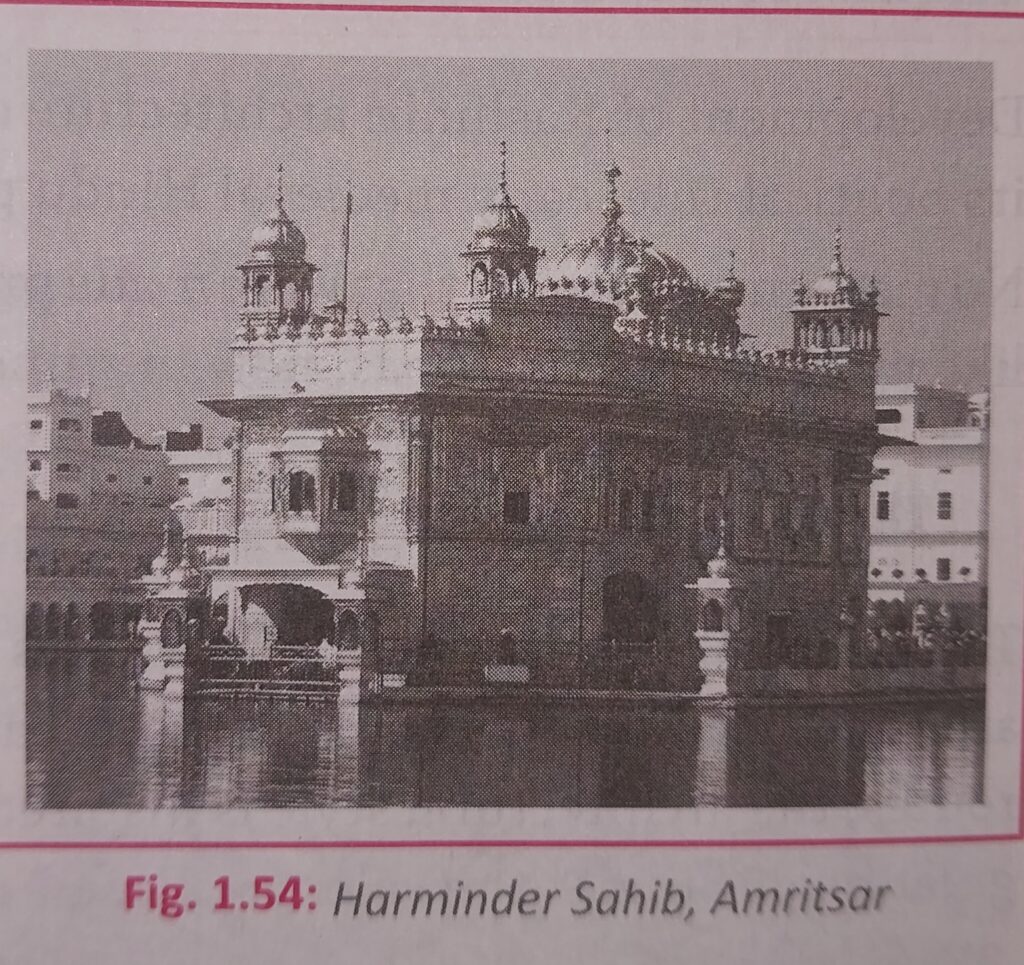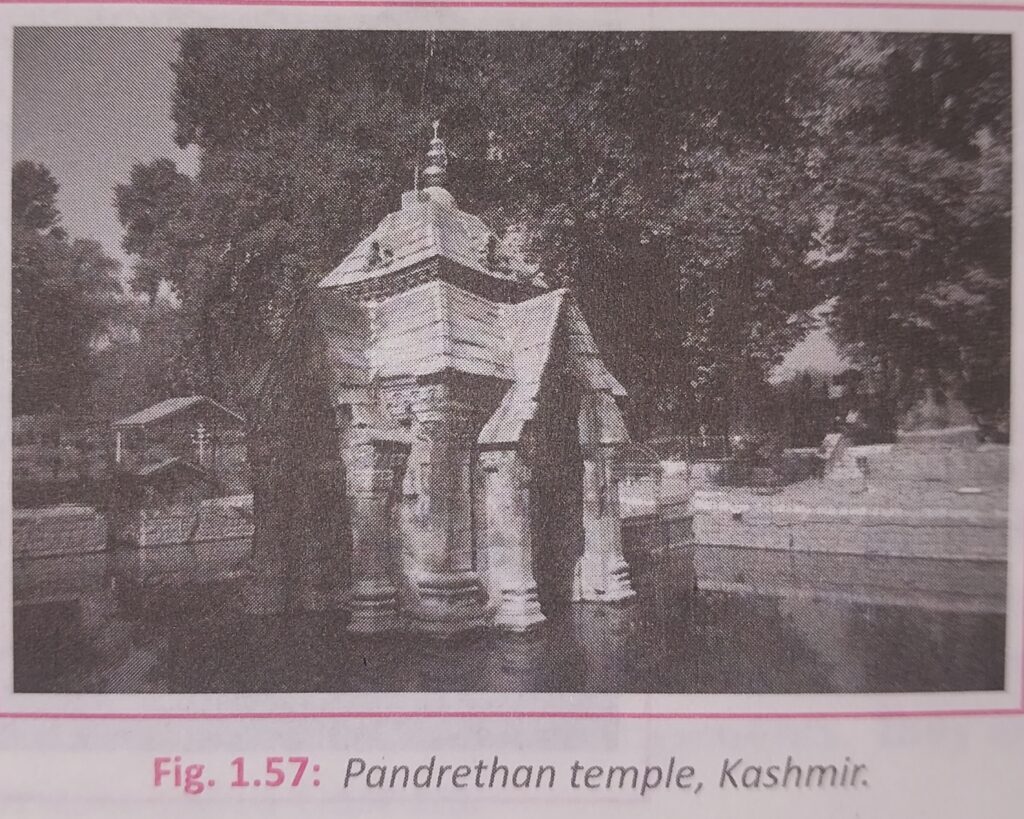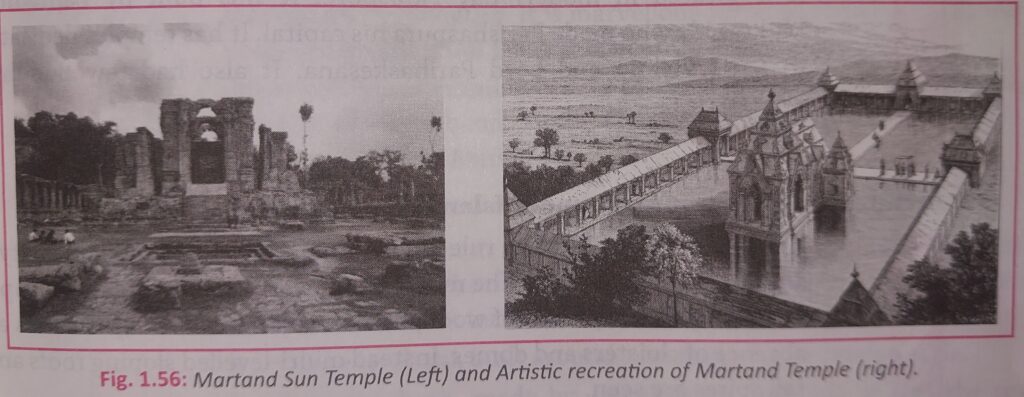The Medieval age of Indian history was dominated by the architecture of Mughals, Delhi Sultanate and other regional schools but at the same time, the architecture style of Sikhs and Rajputs was also developed. The architectural style of Kashmir was a major attraction for historians as it emerged as a differentiated art form in India. While these styles emerged independently but also borrow some elements from other architectural styles as well.
Also Read : Mughal Architecture (c. 1526 – mid. 18th Century AD)
Indo-Islamic Architecture of India (c. 1206 – c. 1526 AD)
Gupta Age – Art and Architecture
Sikh Architectural Style

The Sikh style of architecture was developed in the region of modern-day Punjab. It was heavily influenced by the Mughal style. The use of multiple Chhatris or kiosks on the top of construction, use of shallow cornices, building had fluted domes which were generally covered with brass and copper guilds and arches were decorated by use of numerous foliations. For example, Golden Temple at Amritsar.
Rajput Style of Architecture

The architectural construction of Rajputs were unique in size and scope but they were influenced by the Mughal architectures as well. They generally constructed the buildings of imposing palaces and forts. The concept of hanging balcony, which were constructed in all shapes and sizes, was introduced by Rajputs. The cornices were built in the shape of an arch so that their shadow could took the shape of a bow. For example, Hawa Mahal, Jaipur.
Architecture in Kashmir
The architectural period of Kashmir can broadly divide into two phases; one is 7th century to 14th century AD (the period before 7th century in Kashmir saw no major architectural constructions except some Buddhist monuments), and other period started from 14th century (this period was dominated by Muslim rulers).
Temple Architecture in Kashmir
Temples of Kashmir has its unique features suited to local geography and renowned with stone carvings. Many ancient trade routes were passing through Kashmir and hence, the foreign influence over the architecture in Kashmir also seen. The temple architecture in Kashmir reached to its zenith during the reign of Utpala dynasty and Karkota dynasty.

The temples of Kashmir have relatively a greater number of steps than other temple architectural schools of India. The column walls and triangular pediments were prominent features of the Kashmir temples which were borrowed from Greeks. Trefoil arches were also part of these monuments which were influenced from Gandhara art. The cellular layout & enclosed courtyard and straight edged pyramidal roofs were also prominent features of the temples of Kashmir.

For example, Martand Sun Temple (which is influenced by Gandhara, Chinese and Gupta art) built under the rule of Lalitaditya Muktapida of Karkota dynasty, Pandrethan temple, temples of Awantipora etc.
Architecture in Kashmir under the Muslim Rule
From 14th century AD with the establishment of Muslim rule in Kashmir, led to blend of existing Kashmiri style with Islamic style. The mosques were mostly made using woods, stone masonry and brick. The monuments were mostly in square shape and there is absence of cloisters and domes which were replaced with multi-levelled sloping roofs and tall spires are seen.

The prominent Islamic architectural built are Jama Masjid and Aali Masjid in Srinagar, Pari Mahal built by Dara Shikoh and Gardens built in Kashmir with Char Bagh style by different rulers like Jahangir.
Thus, Sikh, Rajputs and rulers of Kashmir played significant role in the development of architecture in India.
